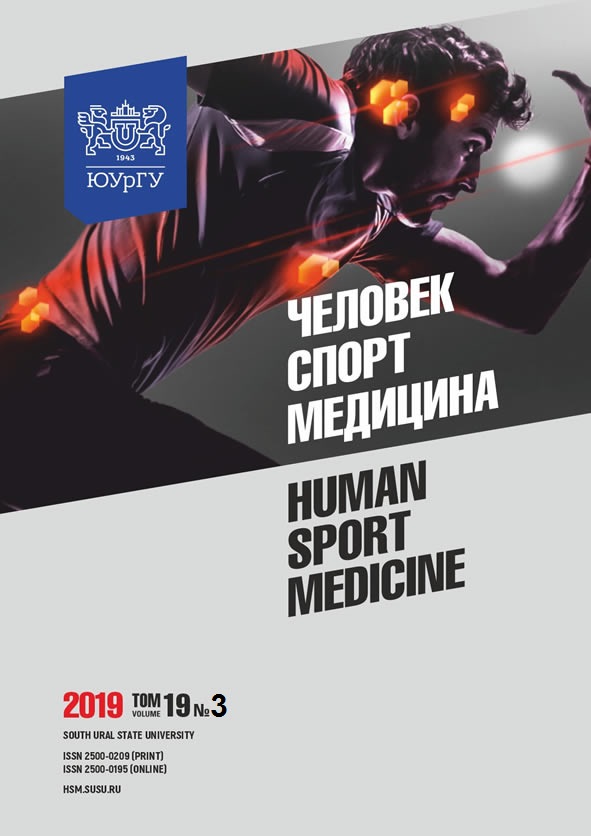SOME ASPECTS OF THE ASSESSMENT OF ANAEROBIC CAPACITY IN COMBAT ATHLETES
Abstract
Aim. The article deals with the assessment of anaerobic capacity in wrestlers depending on wrestling style and morphological indicators. Materials and methods. 33 male wrestlers participated in the experiment. All participants are apparently healthy people at the moment of the study and have their sports grades (from 1st grade to the Master of Sport). The test was conducted with the Monark 891E arm ergometer (Switzerland). The following parameters were obtained during the experiment: peak power (W), average power (W), time to peak power (ms). Results. Power was assessed with an arm ergometer. This power is mostly achieved by the muscles responsible for arm flexion and extension in the shoulder joint and, to a lesser extent, by the biceps and triceps responsible for flexion and extension in the elbow joint. This statement is based on the correlations between the peak power, average power, and chest circumference, which look as following: r = 0.58 ± 0.019 (р = 0.0006) and r = 0.68 ± 0.15 (р < 0.0001). At the same time, shoulder circumference is less correlated with power, while chest circumference correlates with the average power in a more pronounced way than body weight does (r = 0.68 ± 0.15 against r = 0.58 ± 0.19, at р = 0.049 – one-way analysis). Therefore, in wrestlers, it is necessary to take into account chest circumference, which will allow predicting the potential power of the locomotion connected with the shoulder girdle (in case if the test is adjusted to a specific wrestling style), as well as the degree of shoulder girdle muscles development and training as one of the important predictors of successful combat. Conclusion. There are statistically significant correlations between
the morphological indicators of wrestlers and their power. This can be used for the assessment of motor qualities depending on chest circumference, shoulder circumference, and skin-fat folds. It will be helpful for estimating a potential power and the efficiency of the training process as one of the main predictors of successful combat, especially at the first stages of multiyear training.
References
References on translit
Copyright (c) 2019 Human. Sport. Medicine

This work is licensed under a Creative Commons Attribution-NonCommercial-NoDerivatives 4.0 International License.















